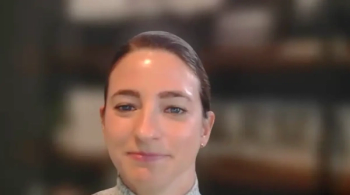
FDA's New Expedited Approval Program Provides Major Communication Breakthrough for Industry
The FDA's Breakthrough Therapy designation program represents a major shift not only in how drugs are brought to market, but in how drug sponsors communicate with agency officials.
The FDA’s Breakthrough Therapy designation program represents a major shift not only in how drugs are brought to market, but in how drug sponsors communicate with agency officials.
Drugs that show a clear or substantial benefit to patients in the earliest stages of clinical trials can now reach the market more quickly, thanks to the FDA’s new Breakthrough Therapy designation. The expedited pathway, introduced by the Food and Drug Administration Safety and Innovation Act of 2012, has the potential to shave off nearly 75% (or by
One of the major innovations of the expedited drug development process appears to be that drug companies now have direct access to something that previously eluded them: FDA officials. According to Reuters, efforts to bring promising therapies to market have been well-coordinated through the use of these pathways, and communications “that might typically take weeks and months” have been occurring more quickly, with fewer gaps between interactions.
The FDA began granting breakthrough designations in January 2013. To date, the agency has received 77 requests. Of these, the regulatory body has granted 25 designations and denied 24. Kalydeco (ivacaftor), Vertex’s cystic fibrosis drug, was approved under the breakthrough designation pathway earlier this year. Anticipated blockbusters such as Genentech’s obinutuzumab and Janssen/Pharmacyclics’ ibrutinib have snagged breakthrough designations as well. Obinutuzumab was granted the designation for the treatment of chronic lymphocytic leukemia (CLL), and ibrutinib was granted 2 breakthrough designations: one to treat patients with CLL and the other for patients with mantle cell lymphoma.
Although getting treatments to patients more quickly is definitely a good thing,
The group at Context Matters compared the process in the United States to that of the one used by the European Medicines Agency (EMA) and concluded that despite not having “fast” or “standard” designations, the EMA approval process took an average of just 3.5 months during 2012.
The FDA needs to have the proper infrastructure and support to successfully reduce approval times, says Peter Pitts, a former head of communications for the FDA who is a board member of Context Matters and co-founder of the
Despite the improvements in communication and collaboration between drug developers and the FDA, manufacturers still must overcome many hurdles on the way to getting therapies approved by the agency. Sponsors must have more resources available in less time in order to push their therapies through the abbreviated regulatory process, and because many of the drugs being submitted for review under the new designation are targeted therapies, they frequently must be developed in concert with a companion diagnostic test. Such diagnostics would have to be approved separately by the FDA’s Center for Devices and Radiological Health, and guidance governing their development has been shaky so far.
Once therapies gain approval through the breakthrough therapy program, they still may face challenges in getting to patients as health plans may be reluctant to provide reimbursement for therapies with a limited amount of evidence regarding patient outcomes. Other issues that may thwart successful market penetration of drugs traveling through this pathway include timing of facility inspections and obtaining drug approval in other countries (where the breakthrough designation is not recognized or accepted). A lack of FDA resources may also affect the success of the breakthrough pathway in getting therapies to patients with few or no treatment options.
But, speed to market isn't the only metric that matters, Pitts points out. "Breakthrough designation doesn’t always mean the product gets approved...sometimes it means that because you fail faster, you don’t waste money on programs that don’t pan out."
Newsletter
Stay informed on drug updates, treatment guidelines, and pharmacy practice trends—subscribe to Pharmacy Times for weekly clinical insights.






















































































































































































































